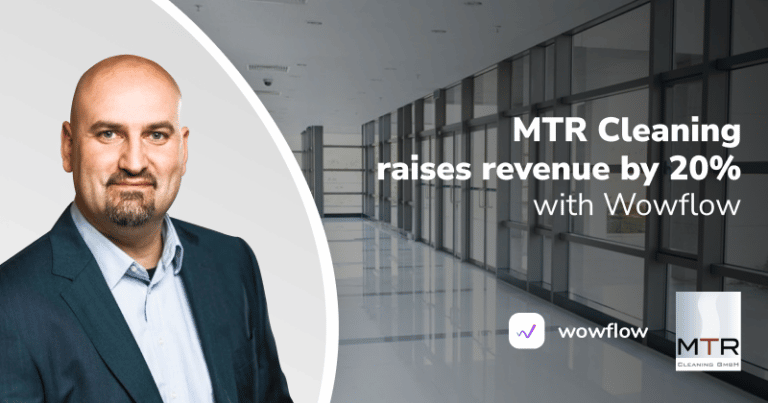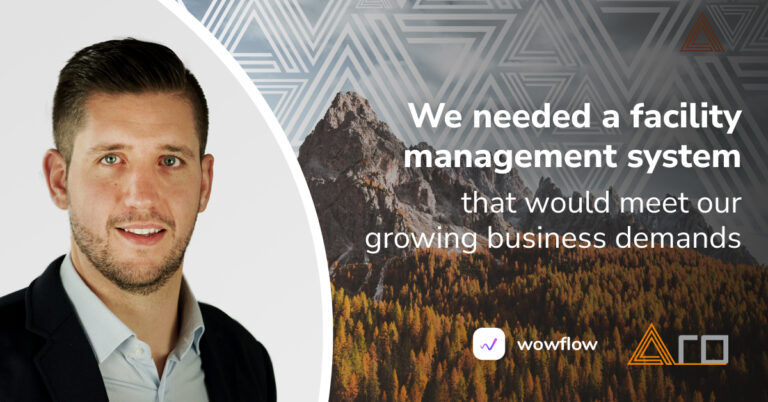In today’s intensely competitive job market, retaining top talent has become more crucial than ever. Companies investing in effective employee retention strategies don’t just save time and resources, but also foster a positive work environment, promoting employee satisfaction and loyalty.
Our article underscores the 17 most potent strategies to enhance employee retention and leverages facilities management industry example to deliver tangible insights into contemporary employee retention practices.
List of contents
What is employee retention?
Employee retention describes all methods and measures that lead to a long-term working relationship between employers and employees. Preventing employees from changing jobs is the primary goal of employee retention measures.
By investing in employee retention methods, companies can satisfy their employees and offer them an incentive to stay with the company.
Successful employee retention is reflected in low turnover, high employee satisfaction, and productivity.
Especially in industries with high turnover or a high shortage of skilled workers, employee retention measures are essential.
For industry-specific insights, consider the following key retention measures employed in facility management.
Key Facts
- Employee retention is critical to a company’s success and can be achieved through fair compensation, meaningful work opportunities, professional development initiatives and recognition.
- Increasing job satisfaction through flexible arrangements and decision-making power leads to higher job satisfaction and better employee retention.
- Investing in necessary equipment and professional development improves skills and knowledge while combating burnout helps companies retain top talent and remain competitive.
Why is employee retention important for companies?

Employee retention, a crucial objective, can be achieved through various means like fostering a positive work environment, acknowledging and appreciating employees, offering competitive wages, and promoting a healthy work-life balance.
Continued employment promotes the working atmosphere, corporate culture and performance of all employees and managers. Accordingly, employee retention measures are an investment with positive effects on the overall success of the company.
5 advantages of employee retention measures
Employee retention measures have many advantages for companies. We have collected the most important ones for you.
- Satisfied employees and a positive working atmosphere are vital steps to prevent job changes.
- Lowering employee turnover cuts a company’s expenditure on recruitment, onboarding, and employer branding.
- Enhanced employee retention usually positively influences job quality and performance.
- Retention measures like training or continued education boost employee competency, adding to a company’s competitive edge.
- Customer satisfaction may also see an uptick due to longer employee tenure.
17 effective methods for employee retention

Effective employee retention strategies are pivotal across diverse business sectors. Our goal with these insights and practical tips is to assist you in retaining your valuable employees and securing their loyalty to your company.
1. Increase job satisfaction
Creating a positive corporate culture is paramount to fostering job satisfaction and employee engagement.
For employee retention programs to be successful, it is essential to give employees the opportunity to contribute ideas and solutions, facilitate collaboration, accommodate different work styles, and empower them to make decisions and adjustments.
In addition, flexible or hybrid work schedules are a key driver of employee retention, as they improve the overall employee experience and allow a better work-life balance. In fact, flexible work arrangements is one of the most effective employee retention strategy today.
By increasing job satisfaction, businesses can ensure that their staff feels valued and engaged, which ultimately leads to higher job satisfaction and a lower likelihood of employee turnover.
Companies that invest in a positive work environment and promote flexibility are therefore more likely to retain their best talent, even when the labour market is highly competitive.
Promote professional development

One of the most important factors contributing to employee retention is the promotion of professional development within the company.
Investing in training and development enables employees to recognize their professional growth potential and acquire new skills and competencies as business needs evolve.
Professional development can help colleagues see their future in the company and pursue an attractive career path, thus increasing their commitment to the company.
3. Strengthen the company culture
A strong company culture is critical to employee retention as it ensures that all team members are integrated into every aspect of their employment.
Successful company cultures are typically characterized by recognition, rewards, engagement, teamwork, professional onboarding, and management practices.
This can be especially important for creating a sense of belonging and promoting diversity, equity and inclusion in the workplace.
By strengthening corporate culture, companies can create an environment where everyone feels valued, engaged and committed to the company’s success. This, in turn, reduces employee turnover and ensures better overall business performance.
Companies that prioritize fostering a strong corporate culture will therefore be more likely to retain their top talent and gain a competitive advantage in the marketplace.
4. Promote work-life balance

Promoting work-life balance is critical to employee retention, as it can help prevent burnout and turnover.
Work-life balance policies prioritize the well-being and recovery of employees and can can be an an important employer branding measure. Examples of such policies include flexible scheduling, home office, remote work, and wellness initiatives.
In fact, remote work and flexible scheduling are among the most effective strategies for employee retention.
5. Foster employee engagement
Promoting employee engagement is an important strategy for retaining employees.
Employees who feel connected to their employer are more likely to remain loyal to the company and less likely to explore alternative job opportunties.
Recognition, rewards, and a meaningful job are critical factors that contribute to increased employee engagement.
Employers can implement various initiatives that promote employee engagement, such as team building, regular feedback, and open communication.
By promoting employee engagement, companies can create a positive employee experience, which also increases work productivity.
6. Offer competitive compensation
A competitive compensation package is essential for staff retention.
Examples of compensation strategies include bonuses, regular pay increases, and performance-based incentives.
Performance-based incentives, in particular, can help to retain top performers and motivate other employees.
7. Promote health and wellbeing
Promoting employee well-being is critical to retaining engaged employees. Companies should listen to their employees’ needs and respond to their feedback accordingly.
For example, management can reimburse the cost of gym membership or massages, provide additional insurance coverage, and enable access to digital wellness or meditation platforms.
Companies that place a high priority on the well-being of their staff will be more likely to retain their top talent and gain a competitive advantage in the marketplace.
8. Cultivate leadership and management skills

Managers directly influence the satisfaction of a team. So it is important to equip management with the necessary skills and resources. This way they can effectively engage their teams and create a positive work environment.
Leaders can foster a sense of belonging among their teams by building trust, addressing problems, and accepting suggestions for improvement.
Regular feedback and effective change management are just two strategies leaders can use to improve employee satisfaction and retention.
9. Provide the necessary tools
Providing employees with the software, tools and materials they need to work effectively is critical to employee engagement.
When it comes to organizing work and motivating your team, choosing the right software, tools and productivity tools is critical to maximizing productivity.
Companies that invest in necessary software will attract new workers, retain high performers, and be more able to counter skill shortages.
10. Build a diverse and inclusive workplace
Creating a diverse and inclusive workplace is important for employee engagement. Research has shown that prioritizing diversity, equity and inclusion can have a positive impact on job satisfaction and increase engagement. A diverse and inclusive workplace promotes a sense of belonging.
Companies can implement various strategies and initiatives to create a diverse and inclusive workplace, such as training and mentoring programs.
11. Develop reward and recognition programs
In addition to competitive compensation, companies should also offer a comprehensive package that recognizes exceptional performance.
Implementing bonus payments or recognition programs is critical to increasing employee retention and productivity.
Recognition programs can both motivate creative thinking and make staff feel more valued.
By implementing effective employee recognition programs, companies can create a positive work environment where employees feel valued, engaged and committed to the success of the company.
Research has shown that employees are 56% less likely to seek new opportunities when they feel their efforts are appreciated.
12. Offer opportunities for promotion
In order to retain people in the long term, it is important to offer opportunities for growth. An opportunity for advancement signals to employees that the company is interested in them in the long term and offers prospects.
This is not just about promotion within the company, but also about the opportunity for further training and development. Employees who feel that they can develop professionally are more more motivated to staz in the company.
Transparent career planning can be an important factor here and should definitely be taken seriously.
13. Handle burnouts

Burnout is a state of physical, emotional and mental exhaustion caused by prolonged stress and overwork that can lead to lost productivity, job dissatisfaction and even physical health problems.
Managing burnout is key to retaining engaged employees. Listen to your employees’ needs and respond to feedback immediately. By improving company culture, dealing openly with problems and communicating clearly, companies can effectively combat burnout among their employees and mitigate negative effects.
Similarly, giving employees extra vacation days or weeks can ensure they don’t feel crushed by work-related tasks. Additional anti-burnout measures can create a positive work environment and foster loyalty across an entire team.
14. Invest in professional development
Investing in professional development is critical to employee retention.
Map out a clear career path for your employees, make training part of the company culture, and tailor development approaches to your staff’s goals.
Through targeted career counseling and a professional training program, your workforce can expand their skills and knowledge. That in turn increases their performance and value to the company and helps to keep the accumulated expertise longer within the company.
15. Perform “Stay interviews”
Stay interviews are conversations between a manager and an employee to find out what he or she likes about the job and what he or she would like to change.
Stay interviews are designed to help managers understand why employees stay and what might cause them to leave.
In this way, managers can gain valuable insights into employee satisfaction and retention, which can serve as the basis for retention strategies and initiatives.
16. Use HR-tools for employee retention
The use of HR tools, such as employee surveys, feedback, and analytics, can help organizations identify gaps in their retention strategies and improve the employee experience. By using HR tools, companies can identify areas for improvement and develop strategies accordingly.
17. Learn from “exit interviews”
Exit interviews allow employers to get valuable feedback from departing employees about their experience and identify opportunities for improvement.
Be sure to incorporate insights from these conversations into your retention strategies and initiatives.
Industry example - employee retention in facilities management

Many companies in facilities management struggle with high turnover and a shortage of skilled workers. The level of pay, the reputation of the profession, and inflexible working hours also contribute to a negative image.
Yet facilities management is characterized by a high level of responsibility, which significantly contributes to employee satisfaction. For example, facilities management maintains the value of real estate and increases customer satisfaction. In addition, facilities management reduces risks and extends the service life of facilities.
Requirements in facilities management
Tasks within facility management involve coordination of processes, effective communication, a results-oriented approach, reliability, and a hands-on work mentality.
Thorough self-management is vital to maintain a clear overview of all project and process operations at all times. Flexibility and organizational skills also rank high among necessary soft skills.
We have outlined 17 methods for retaining employees earlier, but the intricate requirements in Facilities Management necessitate specific measures to enhance working conditions.
Creating optimal digital workplaces for employee retention
One of the most important benefits of digitization on employee performance is increased employee retention. Studies show that employees in digital workplaces are more likely to stay with their company longer than in traditional work environments. Reasons for this include better communication and organization.
With Wowflow, we have developed a task management and collaboration tool that significantly improves working conditions in facilities management. Here is an overview of the most important functions:
- Real-time information and transparent documentation
- Efficient communication with all stakeholders
- Tasks and work instructions in one tool

Municipality of Lana has real-time overview of facility management with Wowflow
“When I became in charge of facility management for the Municipality of Lana in 2020, I started looking for the right tool. Many options were

Cleaning software Wowflow helps MTR Cleaning achieve 20 percent revenue increase
“With the help of Wowflow, we managed to win the EURO PLAZA building in Vienna as a client. The QR code feature was the main

From Frustration To Fortune: Our Journey To Discovering The Game-Changing Facility Management Software
“Some of our clients were hesitant about adopting this new software. But after a quick demonstration, all doubts vanished. Nobody expected it to be that
Be sure to use digital tools to increase listener satisfaction and loyalty among your workforce.
Summary: professional employee retention for your company's success
Implementing effective employee retention strategies is critical in today’s competitive job market.
By focusing on increasing workplace satisfaction through the methods and actions presented, you can create a positive work environment that promotes employee satisfaction, reduces turnover and improves overall performance.
By taking these steps, you can not only retain your top performers, but also gain a competitive advantage in the marketplace, thus ensuring your long-term success and growth.
Frequently asked questions
Employee retention is mainly driven by strong leadership, frequent feedback, opportunities for promotion, competitive compensation, and work-life balance.
Managers must therefore take these steps to improve employee retention, satisfaction, and loyalty.
Successful employee retention is based on four key elements: Well-being, company culture, training and development, and recognition. When you use these cornerstones for the benefit of your employees, you create a positive work environment and increase motivation and loyalty.
An employee retention strategy is a blueprint aimed at decreasing employee turnover and increasing employee engagement. This typically encompasses competitive



